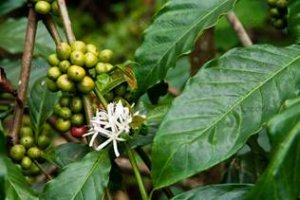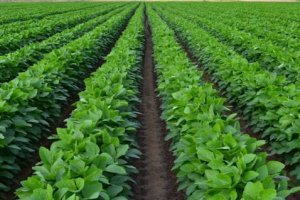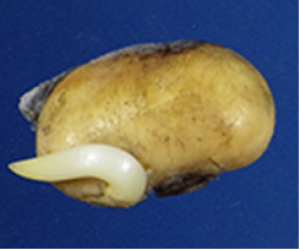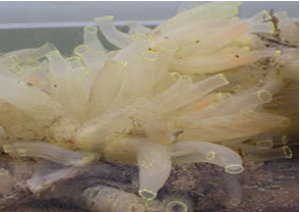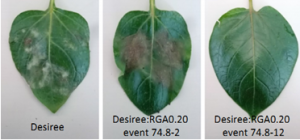Programmable DNA cleavage using CRISPR–Cas9 enables efficient, site-specific genome engineering in single cells and whole organisms. In the research arena, versatile CRISPR-enabled genome editing has been used in various ways, such as controlling transcription, modifying epigenomes, conducting genome-wide screens and imaging chromosomes.
Estimating systemic risk in networks of financial institutions represents, today, a major challenge in both science and financial policy making. This work shows how the increasing complexity of the network of contracts among institutions comes with the price of increasing inaccuracy in the estimation of systemic risk. The paper offers a quantitative method to estimate systemic risk and its accuracy.
Maternal inheritance of mitochondria and mitochondrial genes is a major developmental paradigm in mammals. Propagation of paternal, sperm-contributed mitochondrial genes, resulting in heteroplasmy, is seldom observed in mammals, due to postfertilization targeting and degradation of sperm mitochondria, referred to as “sperm mitophagy.” Our and others’ recent results suggest that postfertilization sperm mitophagy is mediated by the ubiquitin–proteasome system, the major protein-turnover pathway that degrades proteins and the autophagic pathway.
Allopolyploidization is a biological process that has played a major role in plant speciation and evolution. Genomic changes are common consequences of polyploidization, but their dynamics over time are still poorly understood. Coffea arabica, a recently formed allotetraploid, was chosen to study genetic changes that accompany allopolyploid formation. Both RNA-seq and DNA-seq data were generated from two genetically distant C. arabica accessions. Genomic structural variation was investigated using C. canephora, one of its diploid progenitors, as reference genome.
Soybean event DAS-444Ø6-6 is tolerant to the herbicides 2,4-D, glyphosate, and glufosinate. An investigation of potential unintended adverse compositional changes in a genetically modified crop is required to meet government regulatory requirements in various geographies. A study to meet these requirements in Brazil was completed demonstrating compositional equivalency between DAS-444Ø6-6 and non-transgenic soybean. This study supplements the extensive literature supporting transgenesis as less disruptive of crop composition compared with traditional breeding methods.
Stem rust caused by the fungus Puccinia graminis f. sp. tritici (Pgt) remains the major disease threat to wheat production. The Sr33 and Sr50 resistance proteins protect wheat against a broad spectrum of field isolates of Pgt and are closely related to the barley powdery mildew-resistance protein MLA10. Like MLA10, Sr33 and Sr50 possess signaling N-terminal domains that self-associate in planta and initiate cell-death signaling from the cytosol.
Breeding of rice cultivars with long-lasting resistance to the rice blast fungus Magnaporthe oryzae is difficult, and identification of new resistance genes is essential. Most of the loci associated with blast resistance against M. oryzae in rice have been identified in controlled environments and with single isolates, and such loci may confer resistance to only a small faction of the M. oryzae strains. In the field, however, rice is commonly attacked by multiple strains. Research is therefore needed to identify loci that confer resistance in the field, i.e., "field blast resistance".
Salt stress is an important abiotic stressor affecting crop growth and productivity. Of the 20 percent of the terrestrial earth's surface available as agricultural land, 50 percent is estimated by the United Nations Environment Program to be salinized to the level that crops growing on it will be salt-stressed. Increased soil salinity has profound effects on seed germination and germinating seedlings as they are frequently confronted with much higher salinities than vigorously growing plants,
Fibronectin contributes to notochord intercalation in the invertebrate chordate, Ciona intestinalis.
Characterization of developmental genes uniquely shared by tunicates and vertebrates is one promising approach for deciphering developmental shifts underlying acquisition of novel, ancestral traits. The matrix glycoprotein Fibronectin (FN) has long been considered a vertebrate-specific gene, playing a major instructive role in vertebrate embryonic development. However, the recent computational prediction of an orthologous "vertebrate-like" Fn gene in the genome of a tunicate,
The broad spectrum late blight resistance gene R8 from Solanum demissum was cloned based on a previously published coarse map position on the lower arm of chromosome IX. Fine mapping in a recombinant population and bacterial artificial chromosome (BAC) library screening resulted in a BAC contig spanning 170 kb of the R8 haplotype. Sequencing revealed a cluster of at least ten R gene analogues (RGAs).


 Curently online :
Curently online :
 Total visitors :
Total visitors :



